
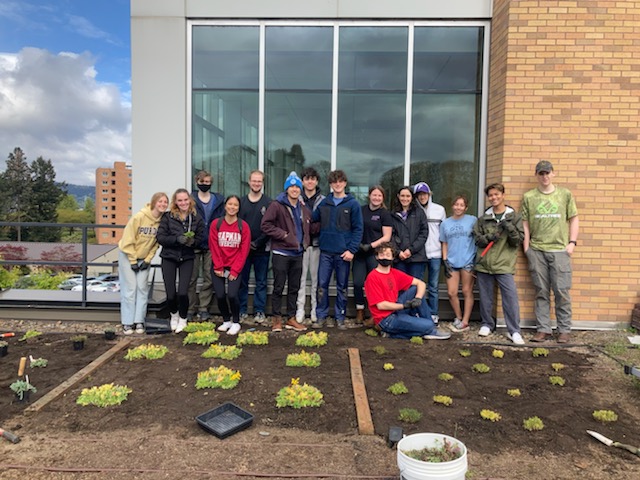
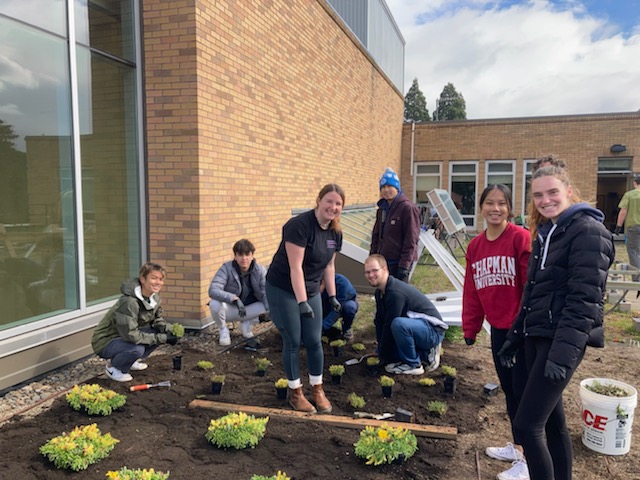
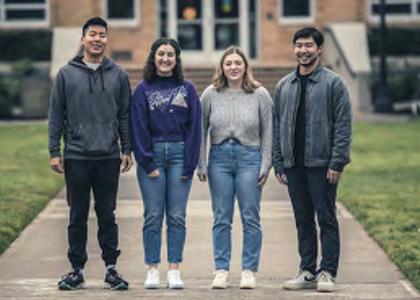
Team:
These four civil engineering students participated in the EPA Rainworks Challenge Competition, a green infrastructure design competition that’s open to student teams from any American college or university. The EPA RainWorks team was tasked with implementing innovative stormwater management techniques on the UP campus, as well as showcasing the environmental, economic, and social benefits of green infrastructure practices. This project focuses on improving existing stormwater infrastructure and reducing outdoor water use at UP. To read more about this capstone project and learn more about Shiley School of Engineering, click here.
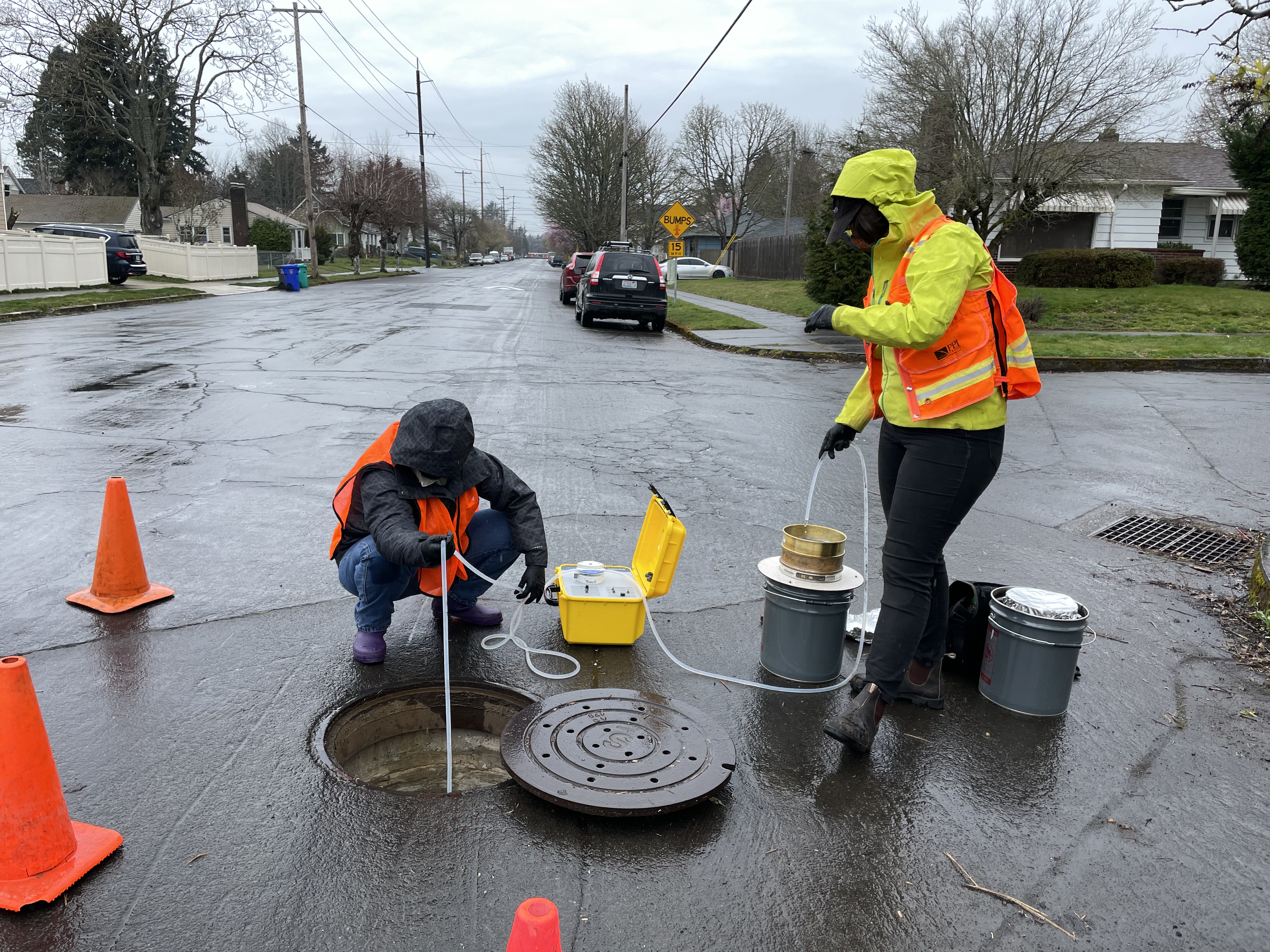
Team:
Microplastic particles, ranging from 5mm to 0.01 mm, are a prominent source of pollution. Stormwater is a major contributor of microplastics to surface water systems, although the magnitude of microplastic pollution in stormwater is unknown. This study quantifies and characterizes microplastics found in stormwater and evaluates the efficiency of microplastics removal in bioretention cells. The study was funded by the Shiley School of Engineering and Oregon Sea Grant.
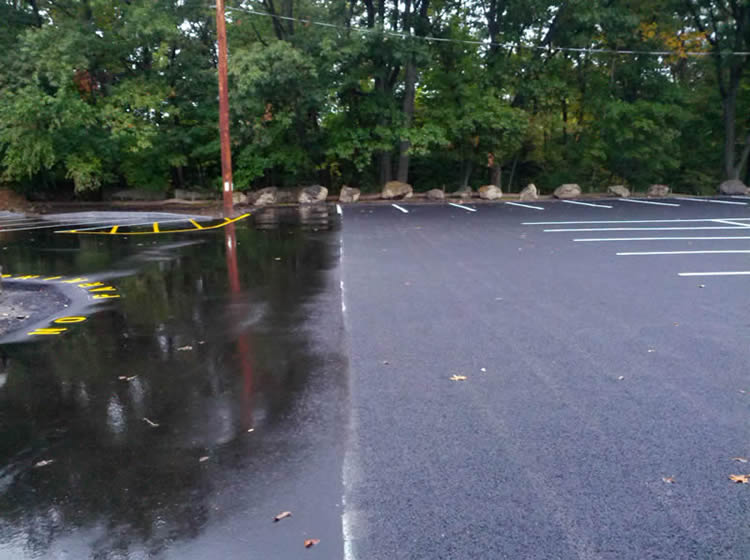
Team:
Permeable pavements have the potential to be a useful tool for mitigating stormwater runoff from streets in urban areas. This research will evaluate the water quality of stormwater that flows through permeable pavements. Two types of permeable pavement will be tested: pervious concrete and porous asphalt. Test specimens will be made in triplicate, and allowed to cure. Stormwater will be collected and used to conduct 5 tests on each specimen. Influent and effluent samples will be taken throughout the duration of the tests, and analyzed for copper, zinc, total nitrogen, ammonia, nitrate, total phosphorus, phosphate, and pH. Influent and effluent results will be compared to evaluate pollutant removal to evaluate the water quality effectiveness of pervious pavements.

As part of the Introduction to Engineering Computing (EGR 111) course, students complete a project related to plastic pollution and litter. The students collect and characterize litter using an app called Litterati. They then analyze the data they collect (such as location, material, and type of litter) using MATLAB and propose potential solutions. Students have collected over 8,000 pieces of litter to date!